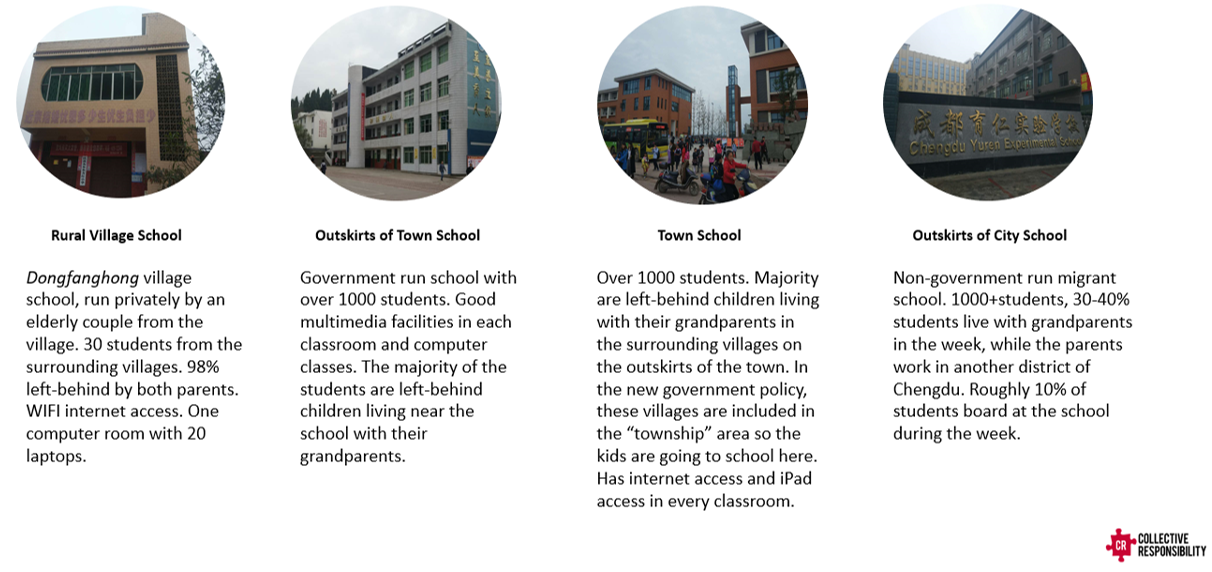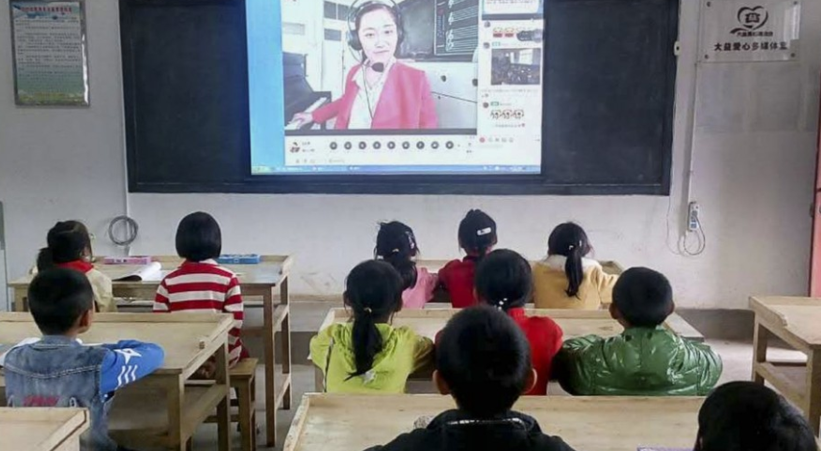Public awareness on the need to address the plight of China’s left-behind children was reignited earlier this year following the high-profile story of Ice-Boy, one of 62 million children left-behind children living in rural China, and attending rural schools, without parental care.
Among those who spoke out on the need for targeted support for rural children was Jack Ma, founder of China’s tech giant Alibaba, who in an address to an audience of 80 business leaders and entrepreneurs proposed a solution to help solve the issue: close smaller rural schools and building larger boarding schools so that resources can be pooled.
Such reform, Ma argues, would allow children without proper parental care to board at the school Monday to Friday where they can be looked after by teachers or care givers within the safety of the school premises, removing the need for left-behind children to make the long journey to and from school every day.
But, based on our recent research where we visited some of China’s poorest areas, it is our belief that building more schools is not the (best) answer.
It’s More than Schools
While Ma’s solution might seem to hold some logic, and definitely captures emotion, in reality building more schools is a cosmetic solution to rural education that overlooks the underlying challenges of how these schools operate, and the need to deliver quality education and pastoral care to rural students.
In fact, since 2001 the government has been closing and consolidating primary schools in rural areas, which has lead to a 75% “top line” decrease of rural primary schools in 15 years amid a government campaign to close small village schools and redirect pupils to study in towns for similar reasons given by Ma. What began as a response to a declining child population has led to greater dropout rates among rural children, especially those who live in more remote areas and must travel for hours to reach their nearest school.
So, are these reforms working? What are the challenges involved with opening up boarding schools for left-behind children, and what developments are taking place in rural China? We asked ourselves those questions on a research trip to rural Sichuan, where we spent time at the schools, speaking with teachers and the local government to find out. What we found was a surprising amount of opportunity for investment in initiatives focused on how to provide training and development to rural teachers, as well as EdTech opportunities to provide quality education that will provide 62 million rural children with the relevant skills they need for the future.
The Rural Schools That Already Exist
In Sichuan Province, home to the largest percentage of China’s left-behind children, we mapped out the main types of school for the migrant and left-behind communities that typify the education system from the village to city level.

At all of these schools above the local rural village level, a percentage of students were boarding, living at the school Monday to Friday. Although this removed the need for long commutes to school, boarding at schools that are short of staff, have cramped unheated dormitories, and often lack of hygiene standards means that enrolling rural children in larger, merged larger boarding schools is merely swapping one set of challenges for another.
Ironically, the closing of small village schools gave many rural students no choice to board as the consolidation of larger schools meant school was too far away to travel to and from daily. Yet higher teacher to student ratios means there is little improvement in the support, pastoral care and education quality of that in a local village school, and as research from REAP (Rural Education Action Program) reveals, these transferred students are the worst performing demographic in the entire country.
A combination of public awareness, support from local NGO organizations, and local government investment has led to an increasing number of rural schools that are equipped with IT facilities, WIFI, new buildings and freshly tarmacked playgrounds. All signs of improvement. However, alongside such improvement comes a serious shortage of well-trained teachers to run the schools, high staff turnover, lack of set curriculum, and overcrowding, with large student to teacher ratio, and classes reaching up to 90+ students per one teacher. While safe school buildings are, and should always be a top priority, there is a lot more work to be done on improving the quality of education.
Where We Recommend Investing
As part of Chinese president Xi Jinping’s goal to eradicate poverty across the nation by 2020, the central government has funded initiatives aimed at narrowing the gap between the quality of education in rural and urban areas. In the business community, there are opportunities linked to the development of regional Chinese economy which, over the next 10-20 years is likely to see an increase in the number of migrants looking for work closer to home and their children. Below, we outline three of these opportunities.
Teacher Training
The quality of education in the countryside is not as advanced as in Chinese cities, and many rural teachers leave to find teaching posts in the cities after they have gained enough experience. It is common for teachers in rural China to teach more than one subject in which they are not specialized in. At one school, Teacher Ma told us he was both the IT teacher and English teacher, teaching IT only because he was the youngest and most familiar with the equipment, yet lacked the skills to teach the subject effectively while at the same time juggling an enormous workload.
Even when such technology is available in the schools, there is nobody who knows how to use it. Once school we visited at the township level had i-pads available in every class, and another had 20 good quality laptop computers but was run by an elderly couple who did not know how to turn the computers on. In both these cases, a lack of teacher training meant that IT facilities, and government investment into facilities and efforts to pool resource, were massively under-utilized.
EdTech & Live Streaming
Edtech in China is a quickly growing industry and one that is supported by a government looking towards private enterprise to spur social innovation. By 2020, the Chinese government wants to invest over 200 billion RMB in edtech startups. As long as online education platforms focus on facilitating active interaction between teachers and their students, children can really benefit from the knowledge that online education provides. For migrant and rural children, whose schools often do not have the resources to widen student perspectives and who are disadvantaged from actions that separate their communities, these opportunities will be increasingly valuable.

Vocational Skills for the Future
Looking to the future, online education will provide the solution to many existing problems in the current education system. Children will be able to gain experience about a variety of topics from teachers around the world. For language classes, students will be able to learn from native speakers and practice accurate pronunciation and dialogue. Classes focusing on programming, engineering, innovation, and project-based learning can teach teamwork and technology skills, which will become increasingly important as China looks to become more innovative.
With the Chinese government announcement that it will end poverty by 2020, it is a goal that will unleash the largest “bottom of the pyramid” economic development scheme to ever be launched. It is a scheme that would, if successful, cause a significant jump in China’s GDP growth and would provide an abundance of opportunities for businesses to engage with, and sell solutions to, targeted communities. With this, opportunities in the rural education sector are likely to grow, particularly those focused on enhancing the role of technology to build a labor force that is able to contribute to a modern economy.
For more information on the left-behind children issue and rural education investments in China, contact [email protected]. Follow our blog articles to keep up with the latest insights.
